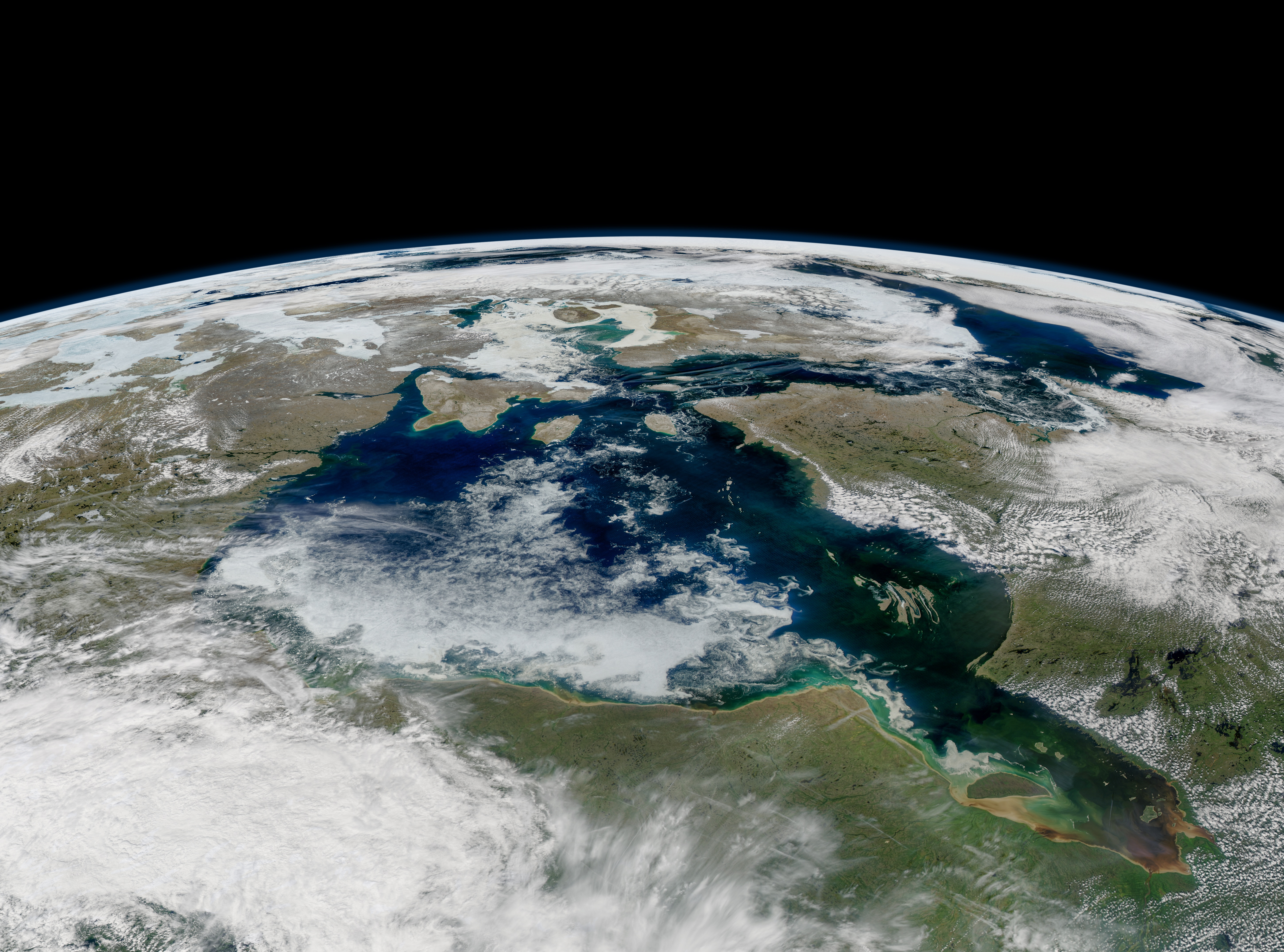
It looks like the polar bears of Hudson Bay are getting a bit of a break this summer. The image above, captured by NASA’s Aqua satellite late last month, shows ice gathered along the western edge of Canada’s Hudson Bay. That means the bears living there could head out on the ice, to hunt fat seals that don’t come near shore. As University of Alberta biologist Andrew Derocher wrote to NASA’s Earth Observatory:
The break-up this spring was a bit unusual, and the bears in western Hudson Bay responded by remaining offshore longer than normal. We typically expect the bears to come ashore about three weeks after the Bay reaches 50 percent ice cover, but the bears we were tracking found patches of ice that worked for them.
A longer ice season—and thus a longer seal-hunting season—helps polar bears build up the fat reserves they need to get through the ice-free months of June, July, August, and September, when they’re stuck on land and usually don’t eat.
The hunting seasons and diets of western Hudson Bay polar bears have been of intense interest to scientists recently. Because of climate change, bay ice is disappearing weeks sooner in the springtime now than it used to, forcing bears onto land earlier. Biologists are tracking the bears to see how they’re responding to this shortened ice season. One team has documented that the bears have learned to eat caribou, goose eggs, and berries on land, as Zac Unger reported for Pacific Standard‘s January/February 2013 issue. But whether that’s enough to keep bears healthy and maintain their numbers as global warming worsens remains hotly debated. Any help from mother nature is sure to be appreciated.




